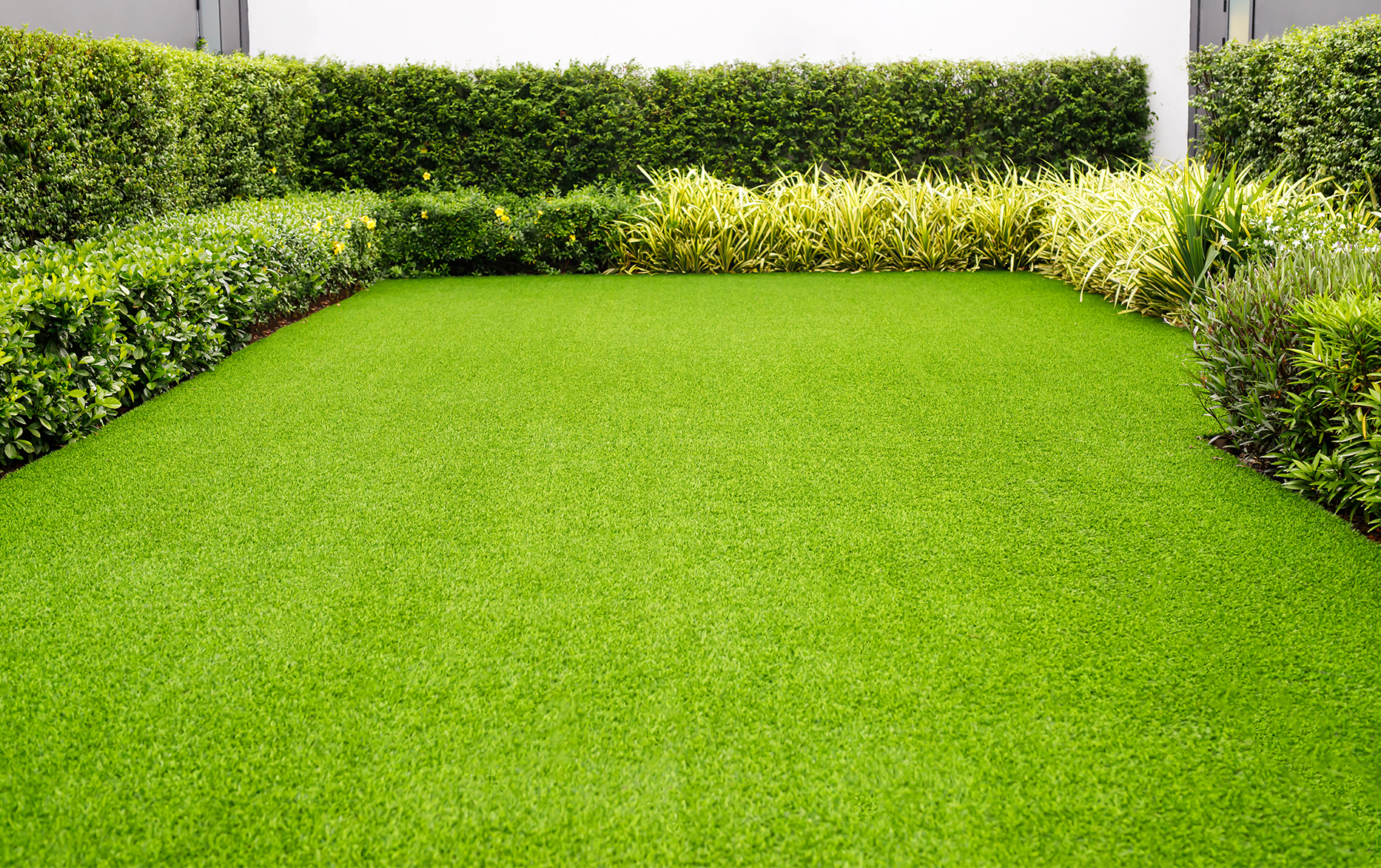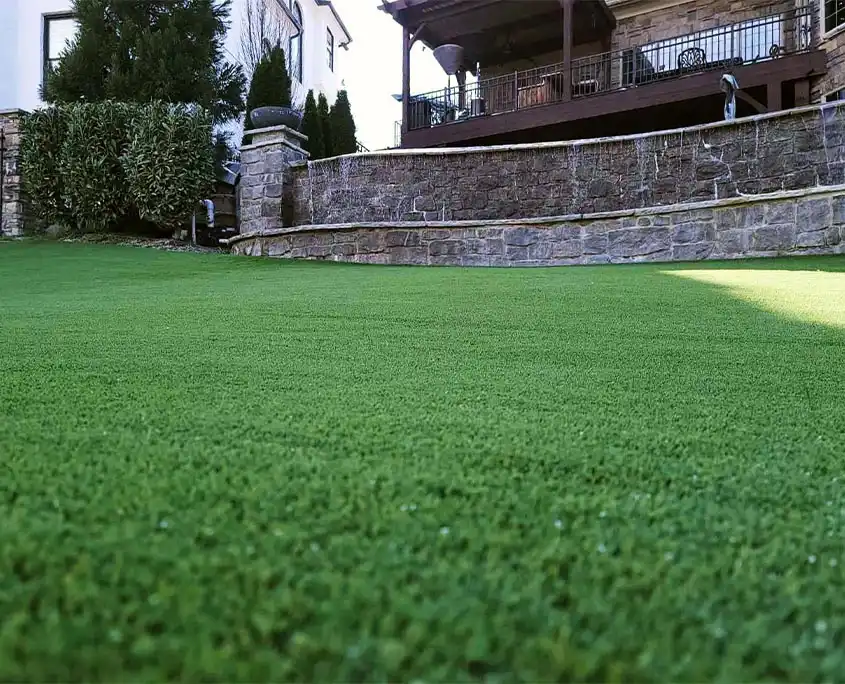Look Into the Environmental Benefits of Opting for Synthetic Grass Solutions
The adoption of synthetic grass options provides an engaging opportunity to deal with pushing environmental obstacles. By significantly decreasing water usage and lessening the application of hazardous chemicals, these options not just promote sustainable landscape design yet additionally safeguard regional communities.
Water Preservation Conveniences
One of the most significant benefits of artificial lawn is its capacity to save water. In comparison, synthetic lawn does not need watering, significantly decreasing the total demand for water resources.
By removing the requirement for normal watering, synthetic grass adds to lasting landscape practices and helps reduce the ecological effect of too much water intake. The conservation of water prolongs to the reduction of drainage, which can lead to soil disintegration and waterway air pollution.
In addition, the installation of synthetic grass enables communities and property owners to designate water sources a lot more efficiently, focusing on necessary usages such as alcohol consumption water and farming. The change in the direction of man-made lawn not just promotes responsible water usage but additionally lines up with wider ecological goals aimed at maintaining natural resources.
As areas significantly focus on sustainability, the water preservation benefits of synthetic grass present a compelling situation for its fostering in property and business landscaping jobs.
Lowered Chemical Use
The transition to man-made turf substantially reduces the dependence on chemical therapies commonly made use of in all-natural grass upkeep. Typical turf monitoring usually entails the application of herbicides, chemicals, and fertilizers to advertise development and control parasites. These chemicals can posture dangers to human wellness, local wild animals, and the environment, adding to soil and water contamination.
In contrast, artificial turf eliminates the requirement for these harmful compounds. Once set up, it requires marginal upkeep, mostly including normal cleansing and occasional infill replenishment. This reduction in chemical usage not only profits the instant environment however additionally contributes to broader ecological security. By lessening the launch of artificial substances right into the ecological community, synthetic grass advertises healthier soil and water supply.
Furthermore, the absence of chemical overflow associated with synthetic grass installations assists shield local rivers from contamination, sustaining aquatic life and preserving biodiversity. Arizona artificial turf. As communities significantly prioritize lasting methods, choosing synthetic grass presents a sensible solution that aligns with environmental preservation objectives. Through this shift, homeowner can delight in rich eco-friendly areas without jeopardizing eco-friendly wellness, leading the way for an extra sustainable future
Reduced Carbon Impact

Moreover, the setup of synthetic grass can lead to substantial water conservation. All-natural lawns need considerable quantities of water for watering, which not just contributes to the carbon footprint associated with water removal and treatment but additionally pressures regional water resources. On the other hand, fabricated lawn needs very little maintenance, requiring no watering, consequently dramatically reducing water usage and its linked energy expenses.
In addition, the long life of synthetic grass adds to its lower carbon effect. With a life-span of approximately 15 years or even more, the demand for frequent replacements is diminished, resulting in much less waste and lower energy intake in manufacturing and dealing with conventional turf options. On the whole, synthetic grass provides a sustainable option for eco conscious weblink landscape design.
Habitat Preservation
Habitat preservation is a vital consideration in the argument over landscaping choices, specifically when comparing fabricated turf to all-natural lawn. Natural lawn lawns frequently need considerable upkeep, consisting of using herbicides, pesticides, and plant foods, which can negatively influence neighborhood environments. These chemicals can leach into the dirt and rivers, harming native flora and animals and interrupting regional habitats.
Synthetic lawn gets rid of the demand for hazardous chemicals, therefore safeguarding neighboring wild animals and keeping the stability of bordering communities. The installation of artificial turf can lead to the conversion of previous grass locations into even more biodiverse landscapes, such as pollinator gardens or native plant locations, which can support regional wildlife.
Eventually, the change to synthetic grass not just saves water and lowers maintenance initiatives however likewise cultivates an extra harmonious partnership between human tasks and the natural atmosphere, link promoting habitat preservation in the procedure.
Long-Term Sustainability
Long-lasting sustainability is a critical consider assessing the benefits of fabricated turf over conventional turf lawns. Among the most substantial benefits of synthetic grass is its durability; it can last approximately 15-20 years with minimal maintenance, whereas natural turf requires constant reseeding and substitute. This durability lowers the demand for consistent resources, such as water, plant foods, and chemicals, which are crucial for maintaining a healthy turf yard.
Additionally, synthetic grass adds to a decrease in carbon emissions related to grass care tools. Typical grass commonly require gas-powered mowers, leaners, and blowers, every one of which contribute to air contamination. Turf installation phoenix az. On the other hand, synthetic grass eliminates the need for such tools, promoting a cleaner atmosphere
In addition, the manufacturing of synthetic grass increasingly uses recycled materials, enhancing its sustainability account. As manufacturers adopt eco-friendly methods, the environmental impact of synthetic lawn remains to lessen.

Conclusion
The adoption of artificial lawn solutions presents significant ecological advantages, consisting of considerable water preservation, minimized reliance on damaging chemicals, and a reduced carbon footprint. Furthermore, synthetic grass aids in protecting natural habitats by minimizing land disturbance and advertising long-lasting sustainability with using durable click for source products. Collectively, these elements highlight the potential of synthetic grass to add favorably to ecological health and provide a sensible option to typical landscaping techniques in an increasingly resource-conscious world.
In comparison, fabricated turf does not need watering, considerably decreasing the overall demand for water resources. By lessening the launch of synthetic substances into the environment, synthetic turf advertises healthier dirt and water systems.
Moreover, the installment of man-made grass can result in substantial water conservation. In comparison, man-made lawn requires marginal maintenance, requiring no watering, therefore considerably minimizing water use and its linked energy prices.

 Jennifer Grey Then & Now!
Jennifer Grey Then & Now! Amanda Bynes Then & Now!
Amanda Bynes Then & Now! Katie Holmes Then & Now!
Katie Holmes Then & Now! Tina Majorino Then & Now!
Tina Majorino Then & Now! Brooke Shields Then & Now!
Brooke Shields Then & Now!